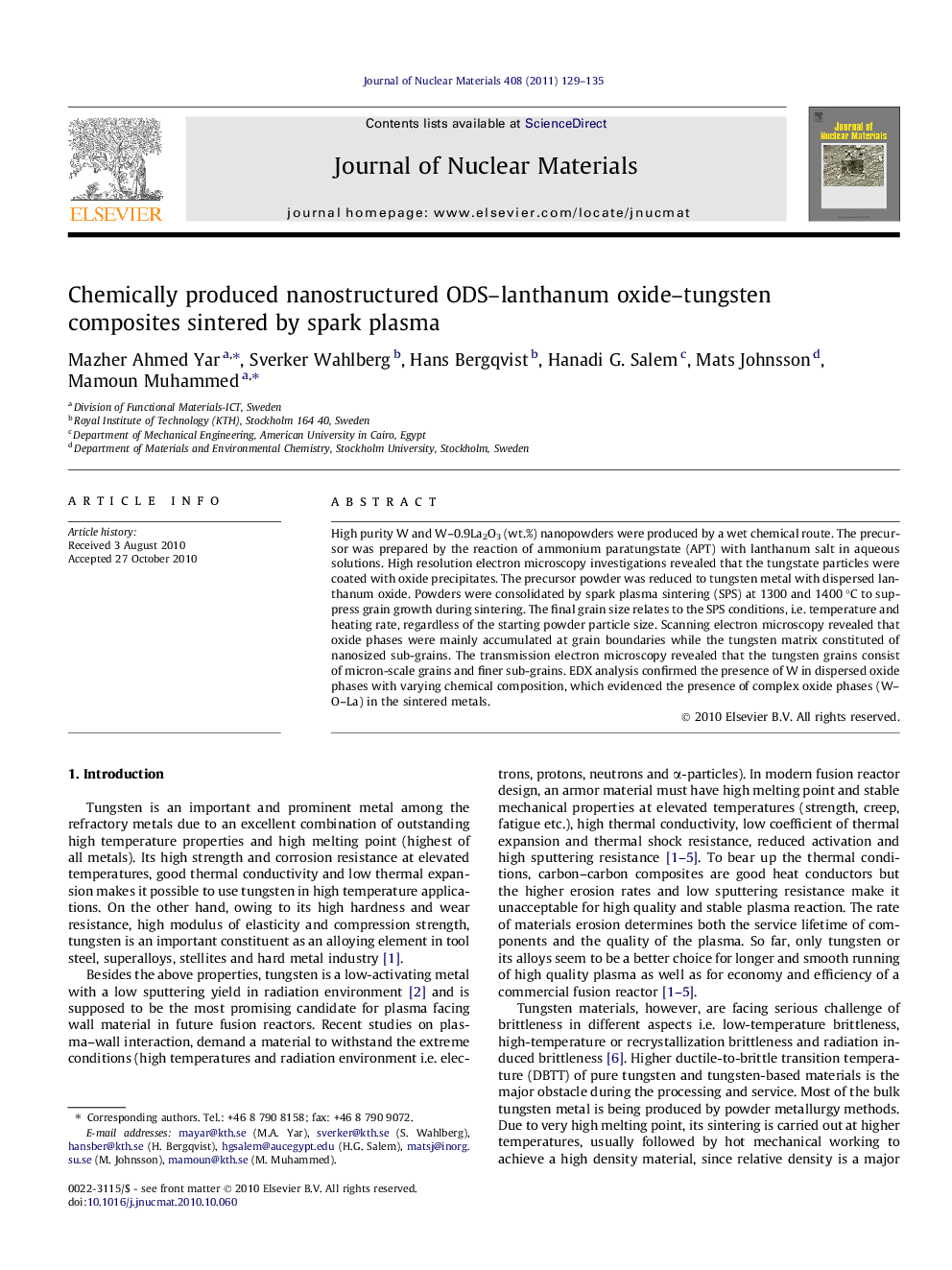| Article ID | Journal | Published Year | Pages | File Type |
|---|---|---|---|---|
| 1567141 | Journal of Nuclear Materials | 2011 | 7 Pages |
High purity W and W–0.9La2O3 (wt.%) nanopowders were produced by a wet chemical route. The precursor was prepared by the reaction of ammonium paratungstate (APT) with lanthanum salt in aqueous solutions. High resolution electron microscopy investigations revealed that the tungstate particles were coated with oxide precipitates. The precursor powder was reduced to tungsten metal with dispersed lanthanum oxide. Powders were consolidated by spark plasma sintering (SPS) at 1300 and 1400 °C to suppress grain growth during sintering. The final grain size relates to the SPS conditions, i.e. temperature and heating rate, regardless of the starting powder particle size. Scanning electron microscopy revealed that oxide phases were mainly accumulated at grain boundaries while the tungsten matrix constituted of nanosized sub-grains. The transmission electron microscopy revealed that the tungsten grains consist of micron-scale grains and finer sub-grains. EDX analysis confirmed the presence of W in dispersed oxide phases with varying chemical composition, which evidenced the presence of complex oxide phases (W–O–La) in the sintered metals.
